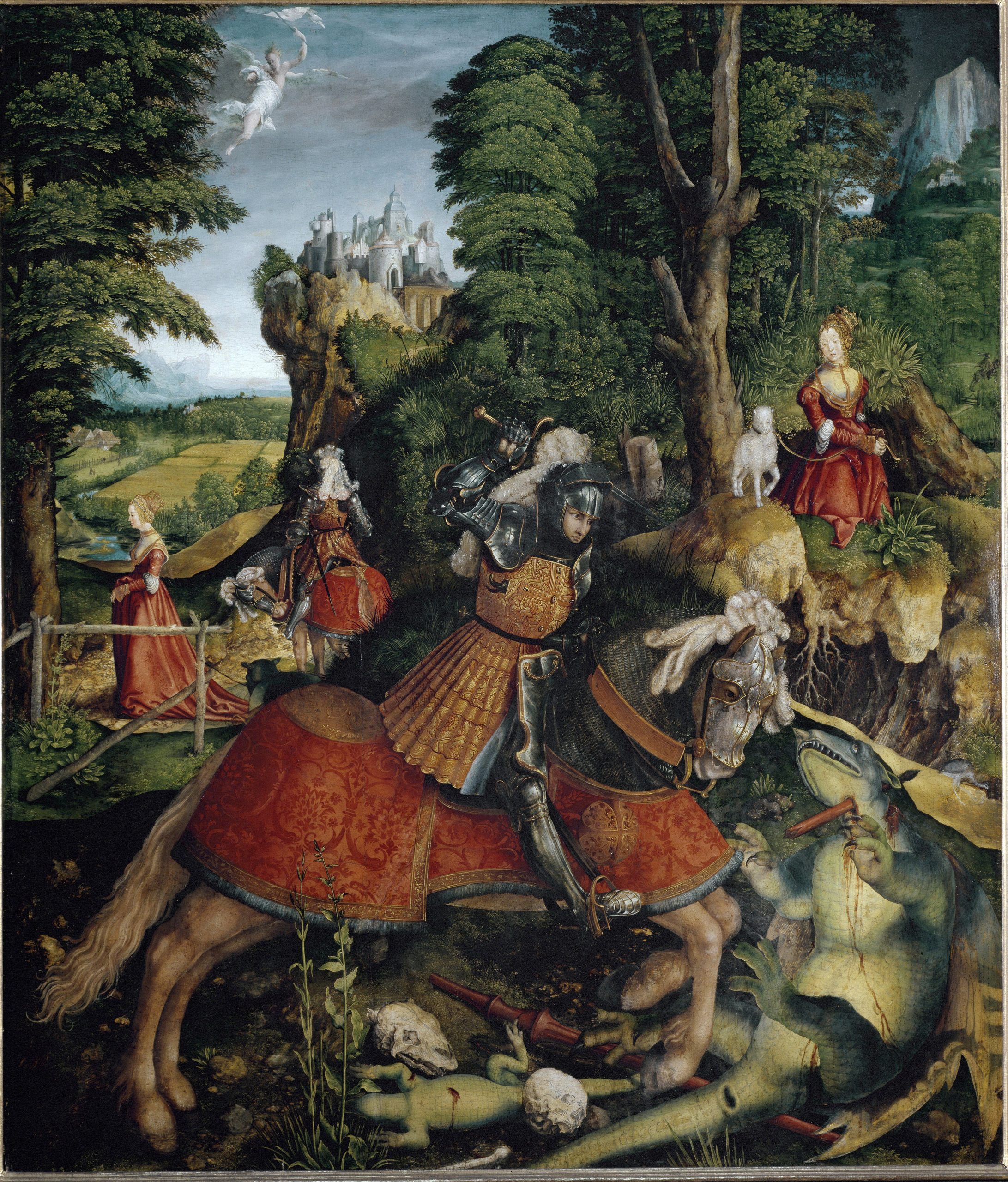My favourite painting: Tug Rice
New York based artist Tug Rice chooses St George and the Dragon by Leonhard Beck.


Tug Rice on St George and the Dragon by Leonhard Beck
‘This remarkable painting enthralled me when I saw it in Vienna. The lush and vibrant colours made me question my preconceived notions about the so-called “dark ages”–offering instead a gleaming, Technicolour version of the Christian legend of St George slaying a dragon.
The almost illustrative quality of the subject calls to mind the picture books of castles and knights I devoured as a child. In contrast to the violent action in the foreground, Beck’s dreamy interpretation on the whole makes this a tranquil scene that is easy on the eyes and worthy of multiple viewings’
Tug Rice is a New York City-based artist who has worked with Halcyon Days and The Ritz London.
Charlotte Mullins comments on St George and the Dragon
This minutely detailed St George and the Dragon was painted in about 1515 by Leonhard Beck when he was working for the Holy Roman Emperor Maximilian I in Augsburg, Germany. Beck painted St George as a wealthy knight who sits astride a plumed and armoured horse, his arm raised and wielding a sword to deliver the final blow.
The dragon—which looks more like a large lizard—has been holding a princess captive. She looks down on the scene from a nearby path in a meticulously painted landscape. It seems St George’s rescue attempt is well under way—the dragon already has a broken lance driven through its scaly neck. It writhes on its back, dead offspring and skulls littering the ground by its tail. Behind this scene we see St George again, this time from the rear, trotting away as the princess walks free, as, beyond the action, we see neatly ordered fields, a walled city and distant blue mountains.
This painting occupies the intersection between medieval illumination, with its jewelled colours and compressed narratives, and northern Renaissance naturalism. Although the trees, grasses and plants show great observational skill, there is an otherworldly quality to this work, as if it were a page from a medieval Book of Hours composed of many separate evenly lit scenes. Beck was also one of the most prolific woodcut designers of his generation and he worked alongside many other artists at the court of Maximilian I, including Albrecht Dürer.
Sign up for the Country Life Newsletter
Exquisite houses, the beauty of Nature, and how to get the most from your life, straight to your inbox.
Country Life is unlike any other magazine: the only glossy weekly on the newsstand and the only magazine that has been guest-edited by HRH The King not once, but twice. It is a celebration of modern rural life and all its diverse joys and pleasures — that was first published in Queen Victoria's Diamond Jubilee year. Our eclectic mixture of witty and informative content — from the most up-to-date property news and commentary and a coveted glimpse inside some of the UK's best houses and gardens, to gardening, the arts and interior design, written by experts in their field — still cannot be found in print or online, anywhere else.
-
 Six rural properties with space, charm and endless views, as seen in Country Life
Six rural properties with space, charm and endless views, as seen in Country LifeWe take a look at some of the best houses to come to the market via Country Life in the past week.
By Toby Keel
-
 Exploring the countryside is essential for our wellbeing, but Right to Roam is going backwards
Exploring the countryside is essential for our wellbeing, but Right to Roam is going backwardsCampaigners in England often point to Scotland as an example of how brilliantly Right to Roam works, but it's not all it's cracked up to be, says Patrick Galbraith.
By Patrick Galbraith